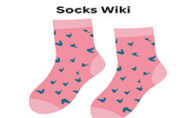Hi, I'm Christopher Bevans, the creator of SocksWiki.com. With a background in fashion design and a passion for innovation, I’m here to share my knowledge on socks from troubleshooting tips to detailed buying guides. I believe the right pair of socks can make all the difference, and through this site, I aim to help you find the perfect fit for every occasion.
Hi, I'm Christopher Bevans, the creator of SocksWiki.com. With a background in fashion design and a passion for innovation, I’m here to share my knowledge on socks from troubleshooting tips to detailed buying guides. I believe the right pair of socks can make all the difference, and through this site, I aim to help you find the perfect fit for every occasion.
Socks slipping into your shoes is a common and frustrating problem that many people experience.
Whether you’re walking, running, or just going about your day, the constant need to adjust your socks can be annoying and uncomfortable.
This issue often stems from a combination of factors, including the fit of your socks, the materials they’re made from, and the design of your shoes.
In this guide, we’ll explore six common reasons why socks slip into shoes and provide five practical solutions to help you keep your socks in place all day.
6 Reasons Why Do Your Socks Keep Slipping Into Shoes
Socks slipping into your shoes can be a frustrating experience, and there are several reasons why this happens. Understanding these causes can help you find solutions to keep your socks in place.
So, here are 6 reasons why your socks keep slipping into your shoes:
1. Improper Fit
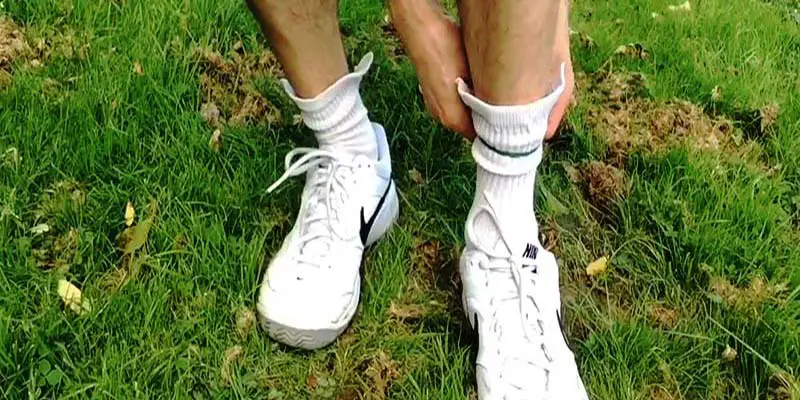
The fit of your socks plays a crucial role in how well they stay on your feet. Socks that are too small may not cover your heel completely, leading to constant slipping, especially when you’re walking or running.
Small socks might also dig into your skin, causing discomfort in addition to slippage.
On the other hand, socks that are too large tend to bunch up around your toes or heel, creating excess fabric that can easily shift around inside your shoe.
This extra material can lead to blisters and further increases the chances of your socks sliding off.
2. Low-Quality Material and Fabric
The material your socks are made from significantly impacts their ability to stay in place.
For instance, socks made from smooth synthetic materials like polyester or nylon often lack the natural grip of cotton or wool, making them more likely to slip down.
Additionally, some synthetic fabrics don’t absorb moisture as well, which can make your feet sweat more, exacerbating the problem.
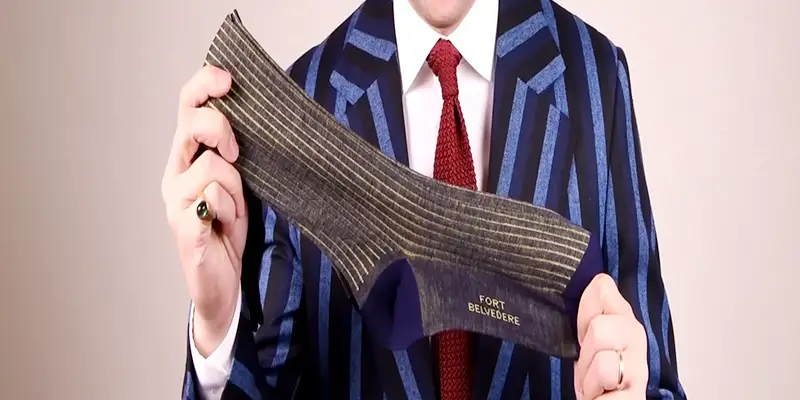
On the other hand, socks with a high cotton content tend to have a better grip on both your skin and the interior of your shoe, helping them stay in place more effectively.
3. Shoe Size and Fit
The fit of your shoes is as important as the fit of your socks. Shoes that are too large create a lot of space inside, allowing your foot to move around freely, which can push your socks down with each step.
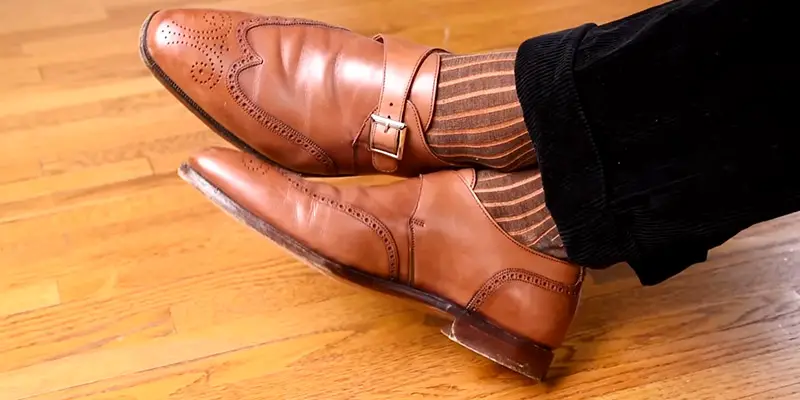
This is particularly common with shoes that have a wide toe box or a loose heel. Conversely, shoes that are too tight can compress your foot and sock, forcing the sock downward as you walk or run.
In both cases, poor shoe fit contributes to discomfort and increases the likelihood of your socks slipping into your shoes.
4. Heel Design of Socks
The design of the heel portion of your socks is another critical factor. Socks with a shallow heel cup may not grip your heel firmly, causing them to slide down during movement.
This is especially common in low-cut or no-show socks, which often sacrifice heel coverage for a more discreet look.
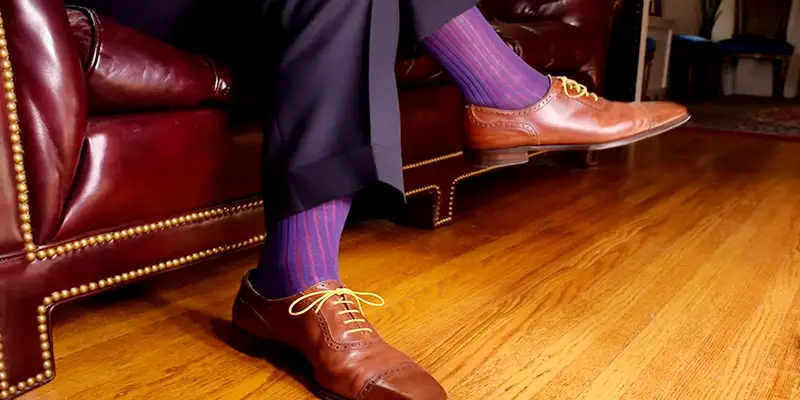
Without sufficient heel coverage, the sock has less surface area to cling to, making it prone to slipping.
Some sock designs include reinforced or padded heels, which can help provide a more secure fit and reduce the chances of slippage.
5. Lack of Elasticity
Elasticity is what keeps socks snugly in place on your feet. Over time, the elastic bands in your socks can wear out, particularly if they’re frequently washed or made from lower-quality materials.
When the elasticity is compromised, the socks lose their ability to cling to your feet, leading to slippage.
In addition to poor elasticity in the band at the top of the sock, the fabric itself may stretch out, further contributing to the problem.
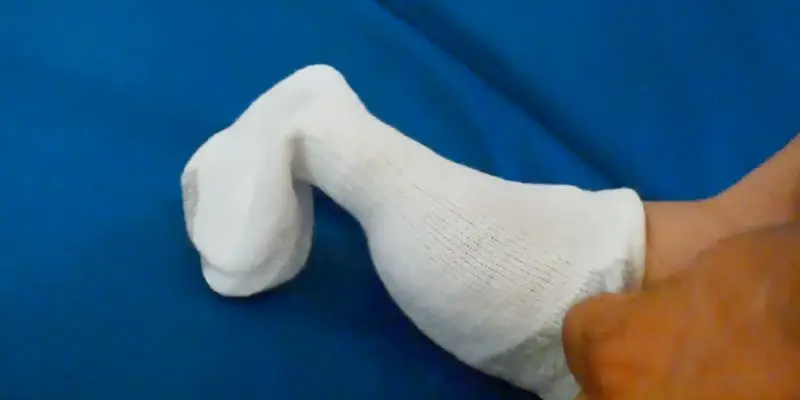
Investing in socks with high-quality elastic or Lycra content can help ensure they maintain their shape and fit longer.
6. Sweating and Moisture
Sweat can play a surprisingly large role in sock slippage. When your feet sweat, the moisture reduces the friction between your skin, the sock, and the shoe, making it easier for the sock to slide down.
This is particularly problematic during physical activities like running or hiking, where your feet are more likely to sweat.
Some socks are designed with moisture-wicking properties that help keep your feet dry and maintain grip.
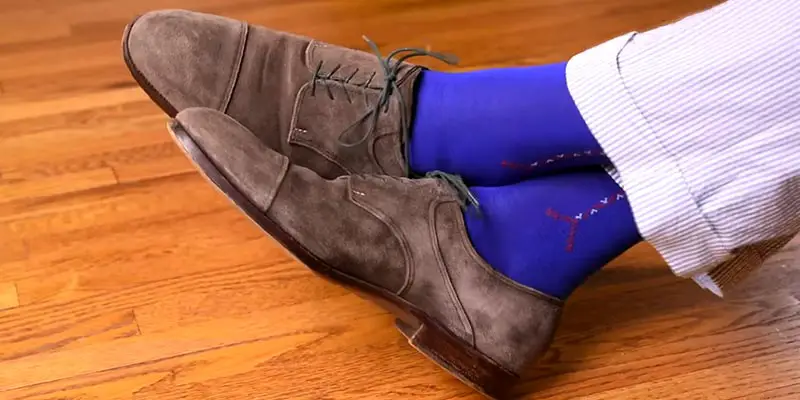
Additionally, choosing socks with ventilation features can help reduce sweating, while using foot powder can further minimize moisture and slippage.
How to Keep Socks From Sliding Down Into Shoes
Here are 5 effective solutions when you face the problem that your socks keep slipping into your shoes:
1. Choose the Right Socks Size
Ensuring that your socks fit well is the first step in preventing them from slipping. A properly fitting sock should cover your heel completely and sit snugly against your skin without feeling too tight or restrictive.
When trying on socks, make sure they reach just above your ankle bone (for ankle socks) or slightly higher (for crew or calf socks) without bunching up.
If your socks are too small, they’ll struggle to stay over your heel, while oversized socks can bunch up, causing discomfort and increasing the chances of slipping.
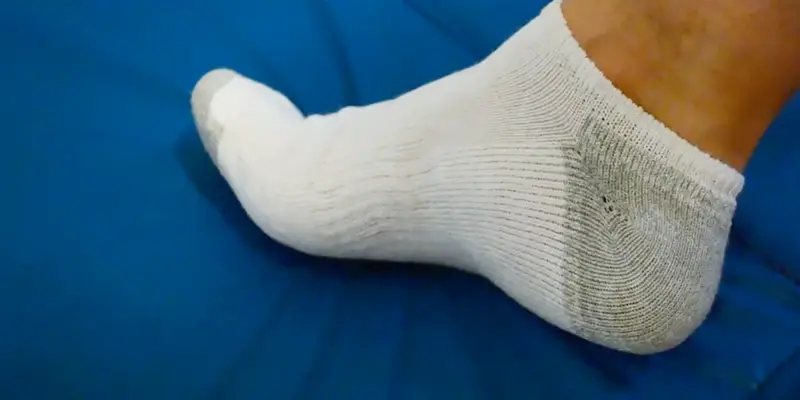
It’s also a good idea to consider the thickness of the sock in relation to the shoe you’ll be wearing, as thicker socks may require more space and a different size.
2. Opt for High-Quality Socks
Investing in high-quality socks can make a big difference in comfort and performance.
Look for socks made from materials that offer both grip and elasticity, such as cotton blends that include spandex or Lycra.
These materials ensure that the sock conforms to the shape of your foot while retaining enough flexibility to stay in place throughout the day.
Additionally, high-quality socks often feature reinforced areas at the heel and toe, providing extra durability and reducing the chances of slippage.
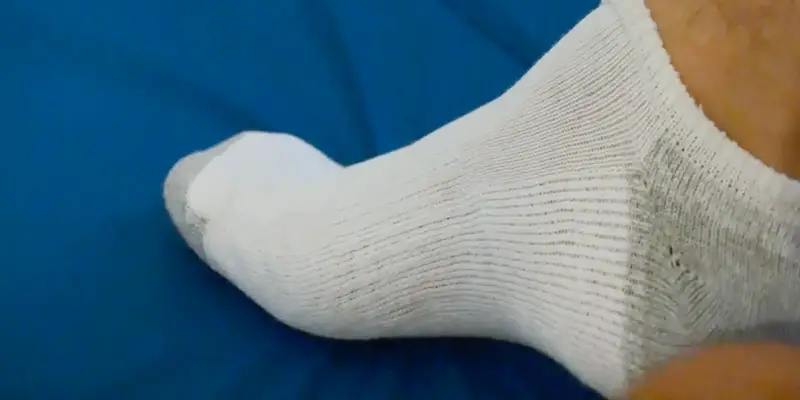
While high-quality socks may come at a higher cost, they typically offer better longevity, comfort, and stability, making them a worthwhile investment.
3. Consider Sock Design
Sock design plays a crucial role in preventing slippage. When selecting socks, look for designs that feature a deep heel pocket, which is designed to cradle the heel more securely.
This ensures that the sock stays in place even during vigorous activities. Some socks also include additional grip features, such as silicone strips on the heel or arch.
These strips provide extra friction between the sock and your skin, further preventing slippage. Another design element to consider is the height of the sock.
For example, no-show or low-cut socks often slip more easily, so choosing a slightly higher cut might provide better coverage and security without sacrificing style.
4. Wear Well-Fitting Shoes
The fit of your shoes is just as important as the fit of your socks. Shoes that are too loose allow your foot and sock to move around inside, which can push the sock down with each step.
On the other hand, shoes that are too tight can compress your foot and force the sock downward.
It’s important to find a shoe that provides a snug fit around your foot, especially in the heel and midfoot areas, without being overly tight.
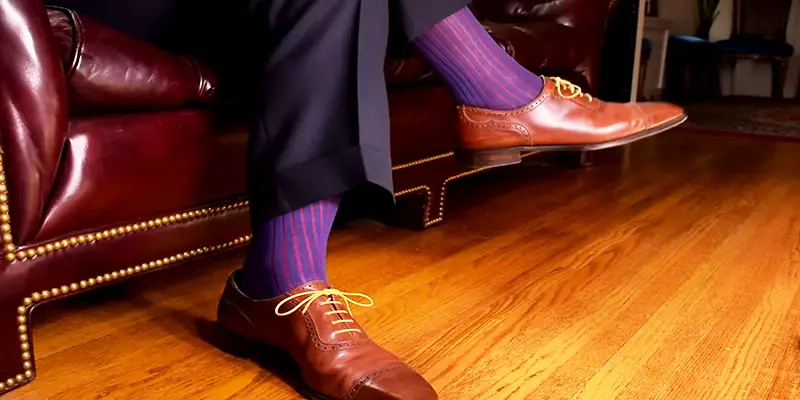
When trying on shoes, wear the type of socks you plan to use with them to ensure a good fit.
Additionally, consider the lacing system of your shoes; a well-laced shoe can help hold your foot securely in place and prevent excessive movement that leads to sock slippage.
5. Manage Moisture
Keeping your feet dry is key to reducing sock slippage. Moisture from sweat can reduce the friction that helps keep your socks in place, making it easier for them to slide down.
To manage moisture, consider choosing socks made from moisture-wicking materials like merino wool or synthetic fibers specifically designed to pull sweat away from your skin.
These fabrics help keep your feet dry and reduce the chances of slippage. Additionally, you can use foot powder or antiperspirant sprays on your feet to control sweating.
These products absorb moisture and help maintain a dry environment inside your shoes, further preventing your socks from slipping.
Frequently Asked Questions
Why do my socks keep slipping down?
Socks often slip down due to improper fit, poor material, or lack of elasticity. Shoes that don’t fit well or excessive sweating can also contribute to the problem.
What sock materials prevent slipping?
Materials like cotton blends with spandex or Lycra provide better grip and elasticity, helping to keep socks in place.
How can I stop my socks from slipping in my shoes?
Ensure your socks and shoes fit well, choose high-quality socks with a deep heel pocket, and manage foot moisture with moisture-wicking socks or foot powder.
Do certain shoe types cause more sock slippage?
Yes, shoes that are too loose or too tight can increase the likelihood of sock slippage by allowing excess movement or compressing the sock.
Can moisture-wicking socks help with slipping?
Yes, moisture-wicking socks reduce sweat, which helps maintain friction between your sock and shoe, preventing slippage.
Wrap Up
Sock slippage can be a persistent annoyance, but understanding its causes and implementing targeted solutions can make a significant difference.
By choosing the right sock size, investing in high-quality materials, considering sock design, wearing well-fitting shoes, and managing moisture, you can minimize or even eliminate this issue.
These small adjustments not only enhance your comfort but also prevent potential blisters and irritation caused by constantly adjusting your socks.
With these tips, you can enjoy a more secure and comfortable fit, ensuring your socks stay in place throughout the day.

Hi, I'm Christopher Bevans, the creator of SocksWiki.com. With a background in fashion design and a passion for innovation, I’m here to share my knowledge on socks from troubleshooting tips to detailed buying guides. I believe the right pair of socks can make all the difference, and through this site, I aim to help you find the perfect fit for every occasion.
- Latest Posts by Christopher Bevans
-
Socks Smell Like Ammonia: Causes and Solution
- -
Best Socks Material for Sweaty Feet 2026
- -
What Socks to Wear With Cowboy Boots?
- All Posts
